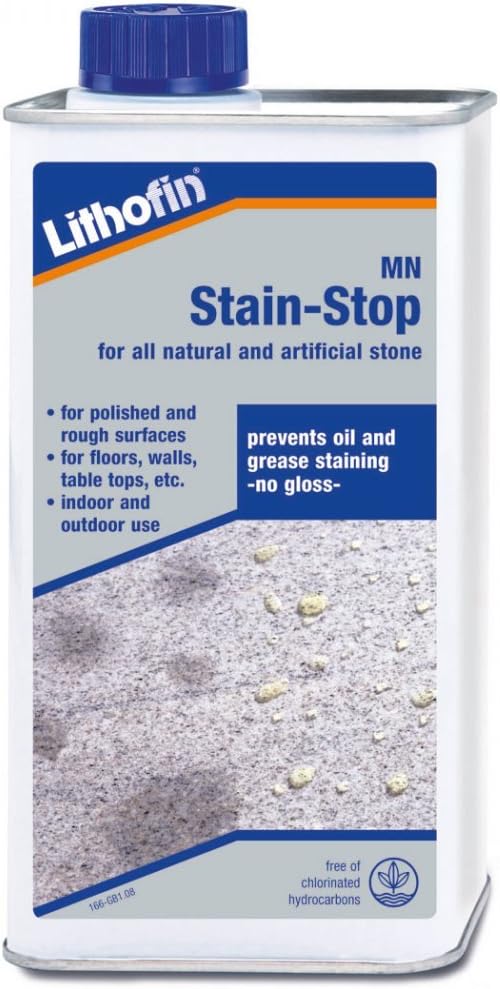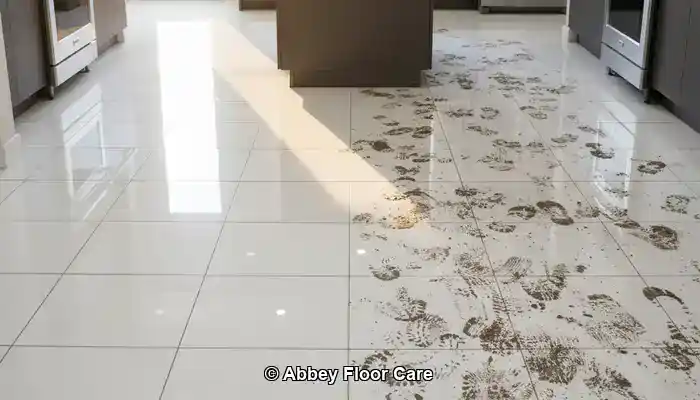
Last Updated on November 8, 2025 by David
Discover How to Reseal Your Porcelain Tiles Effectively
- Although porcelain tiles generally do not require surface sealing, it is essential to reseal grout lines every 1 to 2 years. This critical maintenance routine helps to prevent staining and moisture absorption, thereby ensuring the durability and longevity of your flooring.
- Areas with high traffic, such as kitchens and hallways, necessitate more frequent resealing compared to less-used spaces like guest bathrooms. Therefore, it is vital to customise your maintenance schedule to reflect the specific usage patterns of each room.
- Implementing the water drop test offers a straightforward and effective way to determine if resealing is required. If the water is absorbed by the tile or grout, it signals that resealing is needed to maintain optimal protection.
- Selecting the appropriate sealer is crucial, as it must be compatible with both the tile type and its environment. For example, penetrating sealers are highly recommended for unglazed porcelain and grout to enhance their protective features.
- Be aware of frequent mistakes like over-sealing, using harsh cleaning agents, or ignoring grout lines. These common oversights can undermine the resealing process and lead to potential damage, making careful attention essential.
Uncover the Varieties of Porcelain Tiles Available Today
Expert Suggestions: Top Products for Effective Grout Maintenance Cleaning

Fila Pro Floor Cleaner
|

Lithofin MN Stain Stop
|

Vileda H2PrO Spin Mop System
|

Understanding the Differences Between Glazed and Unglazed Porcelain Tiles
Porcelain tiles come in two main finishes: glazed and unglazed. The glazed version features a protective coating that is baked onto its surface, significantly improving stain resistance while offering a wide array of aesthetic choices. On the other hand, unglazed porcelain presents a more natural, matte appearance, which is widely preferred for its slip resistance and durability, especially in high-traffic environments. Although glazed tiles typically do not need sealing, unglazed tiles, being more porous, require regular resealing to guard against moisture absorption and stains.
Differentiating Between Ceramic Tiles and Porcelain Tiles
While ceramic and porcelain tiles are frequently confused, they exhibit distinct differences in terms of density, water absorption, and overall durability. Porcelain tiles are fired at higher temperatures, resulting in a denser and less porous structure compared to ceramic tiles. This property makes porcelain particularly suitable for moisture-prone areas, such as kitchens and bathrooms. Grasping these differences helps homeowners establish proper sealing routines and choose appropriate cleaning products.
Unpacking the Growing Popularity of Porcelain in UK Homes
The rising popularity of porcelain tiles within UK homes can be attributed to their low maintenance requirements, aesthetic flexibility, and compatibility with underfloor heating systems. Their ability to imitate natural stone or wood while delivering superior durability makes them an appealing choice for both contemporary and traditional designs. Homeowners appreciate porcelain for its long-lasting performance, particularly when combined with proper sealing and maintenance practices.
 Understanding the Essential Role of Resealing for Tile Longevity
Understanding the Essential Role of Resealing for Tile Longevity
Evaluating Grout and Tile Surface Care Requirements
Despite the low porosity of porcelain tiles, particularly when glazed, the grout lines remain highly absorbent and susceptible to staining. The tile surface can withstand moisture, but the grout tends to absorb spills, dirt, and cleaning residues. Regular resealing is crucial to establish a protective barrier that safeguards grout from discolouration and erosion, especially in areas such as kitchens and bathrooms, where spills are commonplace.
Enhancing Moisture Resistance and Stain Prevention
Consistent resealing significantly amplifies moisture resistance and diminishes the chances of stains infiltrating porous surfaces. In high-traffic areas like hallways and utility rooms, resealing becomes vital for maintaining the floor's appearance and preventing long-term deterioration. Homeowners who adhere to a regular resealing schedule can extend the life of both the tile and grout, particularly in regions exposed to water or cleaning agents.
Maintaining Aesthetic Quality and Improving Slip Resistance
Over time, tiles that are unsealed or inadequately sealed can lose their original finish, resulting in a dull or uneven appearance. Regular resealing aids in preserving the surface shine and can enhance slip resistance when the correct product is applied. This is particularly important in areas such as bathrooms and entryways, where wet conditions elevate the risk of slips. A well-maintained seal not only contributes to safety but also enhances aesthetic appeal.
Key Factors Affecting Resealing Frequency

How Does Foot Traffic and Room Functionality Affect Resealing Needs?
Areas with high foot traffic, such as hallways and kitchens, endure more wear and tear, exposing grout to greater levels of dirt and moisture. In contrast, low-traffic rooms, like guest bathrooms or spare bedrooms, may not require resealing as often. Homeowners should evaluate each room individually, rather than applying a blanket resealing schedule.
What Effect Do Cleaning Products Have on Surface Wear?
The use of harsh or acidic cleaning products can hasten the breakdown of sealers, particularly within grout lines. Even items deemed safe for tiles can strip protective layers if misused or excessively applied. A gentle, pH-neutral cleaner is advisable to preserve the seal and extend the periods between resealing.
How Does Indoor Climate and Airflow Influence Sealer Longevity?
Humidity levels and air circulation greatly affect how swiftly grout and tile surfaces dry following cleaning. Poor ventilation can prolong moisture exposure, potentially compromising sealers over time. Homes with efficient ventilation and balanced humidity levels tend to keep sealed surfaces intact for extended periods, especially in bathrooms and utility areas.
Need Help with Your Tiles? Send us a quick message for expert assistance.
How Can You Assess If Your Tiles Need Resealing?
What Are the Main Indicators of Wear or Absorption?
Visible changes in grout colour, heightened staining, or a diminished appearance of the tile surface may indicate that the seal has deteriorated. In high-usage areas, this wear can accumulate gradually, often going unnoticed until dirt becomes more challenging to eliminate or moisture lingers post-cleaning.
How Does the Water Drop Test Work as an Evaluation Method?
A simple yet effective way to assess seal integrity is through the water drop test. By dropping a few droplets of water onto the tile and grout, you can observe whether they bead or absorb. If the water swiftly penetrates or leaves a dark stain, it clearly indicates that resealing is necessary. This test is particularly reliable on unglazed porcelain and grout lines with higher porosity.
How Can You Spot Surface Dullness and Grout Discolouration?
Tiles that appear chalky or exhibit an uneven sheen frequently signify a loss of their protective coating. Similarly, grout that darkens or displays patchy staining often indicates seal deterioration. These visual indicators aid homeowners in determining if resealing is required, even if the floor appears clean.
Selecting the Best Sealer for Your Porcelain Flooring
What Are the Differences Between Penetrating and Surface Sealers?
Penetrating sealers seep into the tile and grout, creating a protective barrier without altering the surface appearance. These are particularly effective for unglazed porcelain and grout lines, offering moisture resistance while retaining a natural look. Conversely, surface sealers create a visible layer that may enhance shine or texture; they are often utilised on decorative tiles but can affect slip resistance if not chosen wisely.
How to Choose Safe Sealers for Tiles and Grout?
Not all sealers are suitable for both tile and grout. Homeowners should select products specifically labelled as safe for porcelain and compatible with cement-based grout. Using the wrong type can result in hazing, residue build-up, or reduced effectiveness. Always review product labels to ensure compliance with UK safety regulations for optimal long-term performance.
What Should You Look for in Eco-Friendly and Pet-Safe Sealers?
Many modern sealers are water-based and low in volatile organic compounds (VOCs), making them safer for indoor use. For households with pets or young children, choosing a non-toxic, eco-friendly sealer minimises exposure risks during application and drying. Such products typically require less ventilation and are easier to clean up afterward.
Step-by-Step Process for Resealing Your Tiles
How to Prepare Surfaces for Resealing with Effective Cleaning
Before resealing, thoroughly cleanse the tile and grout using a pH-neutral cleaner. Ensure that all dirt, oils, and residues are completely removed to facilitate the sealer's proper adhesion. It is crucial to allow the floor to dry fully; any moisture trapped beneath the sealer can lead to hazing or uneven application, ultimately compromising the seal's effectiveness.
What Tools and Techniques Should You Use for Application?
Employ a soft applicator pad, microfibre cloth, or brush specifically crafted for the product and surface type. Apply the sealer uniformly across the tile and grout, working in manageable sections to avoid unsightly overlap marks. Always adhere to the manufacturer's guidelines regarding coverage rates and refrain from allowing excess product to pool in grout joints.
Understanding the Significance of Drying Times and Adequate Ventilation
Most sealers necessitate a drying period of 2 to 4 hours before permitting light foot traffic and up to 24 hours for complete curing. Open windows or utilise fans to improve air circulation, especially in confined spaces. Avoid wet cleaning or placing rugs on the surface until the seal has fully cured to prevent imprinting or tackiness.
Resealing Timelines Based on Room Functionality
What Are the Resealing Requirements for Kitchens, Bathrooms, and Hallways?
Kitchens generally necessitate resealing every 12 to 18 months due to frequent spills, cooking residues, and high foot traffic. Bathrooms may adhere to a similar timetable, particularly around showers and sinks where moisture levels are significant. Hallways, depending on their level of traffic, might require resealing every 18 to 24 months to ensure the protection of grout and the clarity of the surface.
How to Assess Resealing Needs in Low-Traffic versus High-Traffic Areas?
In low-traffic locations such as guest bathrooms or spare bedrooms, resealing every 2 to 3 years may be sufficient. Conversely, high-traffic zones like entryways, kitchens, and utility rooms benefit from more regular maintenance. Homeowners should tailor their resealing schedules according to the specific usage of each space rather than relying on a generic guideline.
What Seasonal Factors Should You Consider for Resealing?
Spring and early autumn present ideal conditions for resealing floors in the UK, as they offer moderate temperatures and sufficient airflow. It is wise to avoid resealing during high humidity or extreme cold, as these conditions can influence drying times and the overall effectiveness of the product. Planning resealing around seasonal cleaning routines ensures consistency and supports the overall health of your flooring.
Preventing Common Resealing Mistakes
What Are the Dangers of Over-Sealing Your Tiles?
Applying excessive amounts of sealer or resealing too frequently can lead to surface build-up, hazing, or sticky residues. This issue is especially prevalent with surface sealers, which form a visible layer. Homeowners should follow manufacturer instructions and only reseal when the previous layer has sufficiently worn down or failed.
What Are the Effects of Using Harsh Cleaners Before Sealing?
Acidic or bleach-based cleaning agents can weaken the tile and grout, hindering the sealer's ability to bond effectively. Always select a pH-neutral cleaner prior to resealing to ensure the surface is clean and ready for treatment. Harsh chemicals may leave residues that disrupt the performance of the sealer, ultimately compromising the sealing process.
Why Is It Critical Not to Neglect Grout Lines During Resealing?
Grout, often the most vulnerable component of a tiled floor, is frequently overlooked during the resealing process. Failing to seal grout lines can lead to uneven protection and accelerated staining. It is essential to use a small brush or targeted applicator to guarantee that grout receives sufficient coverage, particularly in areas prone to spills, such as kitchens and bathrooms.
Common Queries Regarding Resealing Porcelain Tiles
Can I Reseal My Tiles Myself?
Yes, numerous homeowners choose to reseal their porcelain tiles and grout independently using readily accessible products. The key to success lies in meticulously following the instructions, employing tile-safe sealers, and ensuring that the surface is thoroughly clean and dry before application. DIY resealing is particularly effective in low-traffic areas or as part of routine maintenance.
How Can I Tell if My Seal Has Failed?
The water drop test serves as a dependable method for assessment. Simply place a few drops of water on the tile and grout, and observe whether they bead or absorb. If the water penetrates quickly or leaves a dark stain, the seal is likely compromised, indicating that resealing is advisable.
Which Products Are Safe for Pets?
Look for water-based sealers that have low VOC content and are labelled as non-toxic or pet-safe. These products help mitigate exposure risks during application and drying, making them appropriate for households with pets or children. Always ensure proper ventilation and keep pets off the floor until the seal has fully cured.
Is Resealing Necessary for Glazed Tiles?
Generally, glazed porcelain tiles do not require surface sealing; however, the grout between them can greatly benefit from consistent resealing. In certain cases, a light application of penetrating sealer may be used to protect the grout without altering the tile’s finish.
The Article How Often Should You Reseal Porcelain Tiles first found on https://www.abbeyfloorcare.co.uk
The Article Resealing Porcelain Tiles: How Often Should You Do It? appeared first on https://fabritec.org
The Article Resealing Porcelain Tiles: Frequency and Best Practices Was Found On https://limitsofstrategy.com
The Article Resealing Porcelain Tiles: Best Practices and Timing Guide found first on https://electroquench.com

